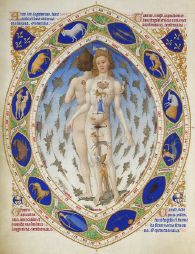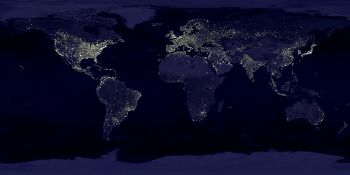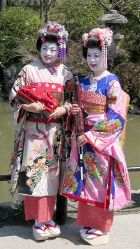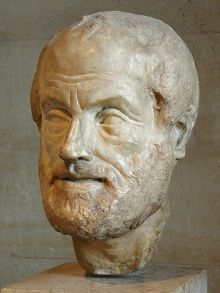Human being
Note: This is only a very rough draft, with notes. Please do not edit this article until the actual article is complete — i.e., when this notice is removed. You may add comments on what you would like to see included.Rick Swarts 03:17, 5 November 2005 (UTC)
Need to discuss spiritual and physical body and spiritual and physical mind
| Homo sapiens Conservation status: Secure | ||||||||||||||||||||
|---|---|---|---|---|---|---|---|---|---|---|---|---|---|---|---|---|---|---|---|---|
| Pioneer image Image of a man and a woman, sent into space with the Pioneer 11 mission | ||||||||||||||||||||
| Scientific classification | ||||||||||||||||||||
| ||||||||||||||||||||
| Binomial name | ||||||||||||||||||||
| Homo sapiens Linnaeus, 1758 | ||||||||||||||||||||
| Subspecies | ||||||||||||||||||||
|
Homo sapiens idaltu (extinct) |
- For other uses, see Human (disambiguation).
Human beings define themselves in biological, social, and spiritual terms. Biologically, humans are classified as the species Homo sapiens (Latin for "wise man"): a bipedal primate of the superfamily Hominoidea, together with the other apes—chimpanzees, gorillas, orangutans, and gibbons.
- From start of Britannica:(species Homo sapiens), a bipedal primate mammal that is anatomically related to the great apes but is distinguished by a more highly developed brain, with a resultant capacity for articulate speech and abstract reasoning, and by a marked erectness of body carriage that frees the hands for use as manipulative members. Humans occur in a number of freely interbreeding
Humans have an erect body carriage that frees their upper limbs for manipulating objects and a highly developed brain capable of abstract reasoning, speech, language, and introspection. Bipedal locomotion appears to have evolved before the development of a large brain. The origins of bipedal locomotion and of its role in the evolution of the human brain are topics of ongoing research.
The human mind has several distinct attributes. It is responsible for complex behaviour, especially language. Curiosity and observation have led to a variety of explanations for consciousness and the relation between mind and body. Psychology attempts to study behaviour from a scientific point of view. Religious perspectives emphasise a soul, qi or atman as the essence of being, and are often characterised by the belief in and worship of God, gods, spirits, or other people. Philosophy, especially philosophy of mind, attempts to fathom the depths of each of these perspectives. Art, music and literature are often used in expressing these concepts and feelings.
Like all primates, humans are inherently social. They create complex social structures composed of co-operating and competing groups. These range from nations and states down to families, and from the community to the self. Seeking to understand and manipulate the world around them has led to the development of technology and science. artefacts, beliefs, myths, rituals, values, and social norms have all helped to form humanity's culture.
Terminology
In general, the word people is a collective or plural term for any specific group of individual persons. However, when used to refer to a group of humans possessing a common ethnic, cultural or national unitary characteristic or identity, people is a singular count noun, and as such takes an "s" in the plural (examples: the English-speaking peoples of the world, the indigenous peoples of Brazil).

Juvenile males are called boys, adult males men, juvenile females girls, and adult females women. Humans are commonly referred to as persons or people and collectively as Man (capital M), mankind, humanity, or the human race. Until the 20th century, human was only used adjectivally ("pertaining to mankind"). Nominal use of human (plural humans) is short for human being, and not to be considered good style in traditional English grammar. As an adjective, human is used neutrally (as in human race), but human and especially humane may also emphasise positive aspects of human nature, and can be synonymous with benevolent (versus inhumane; c.f. humanitarian).
A distinction is maintained in philosophy and law between the notions "human being", or "man", and "person". The former refers to the species, while the latter refers to a rational agent (see, for example, John Locke's Essay concerning Human Understanding II 27 and Immanuel Kant's Introduction to the Metaphysic of Morals). The term "person" is thus used of non-human animals, and could be used of a mythical being, an artificial intelligence, or an extraterrestrial. An important question in theology and the philosophy of religion concerns whether God is a person. (See also Great ape personhood.)
In Latin, humanus is the adjectival form of the noun homo, translated as "man" (to include males and females). The Old English word man could also have this generic meaning, as demonstrated by such compounds as wifman (“female person”) → wiman → woman. For the etymology of man see mannaz.
Biology
Anatomy and physiology
Template:Main3
Humans exhibit fully bipedal locomotion. This leaves the forelimbs available for manipulating objects using opposable thumbs.
Humans vary substantially around the mean height and mean weight. Some of this variation is explained by locality and historical factors. Although body size is largely determined by genes, it is also significantly influenced by diet and exercise. The mean height of a North American adult female is 162 cm (5'4") and the mean weight is 62 kg (137 lb). North American adult males are typically larger: 175 cm (5'9") and 78 kilograms (172 lb).
Human skin is relatively hairless in comparison to other primates. The colour of human hair and skin is determined by the presence of coloured pigments called melanins. Most researchers believe that skin darkening was an adaptation that evolved as a defence against UV solar radiation; melanin is an effective sunblock. The skin colour of contemporary humans can range from very dark brown to very pale pink. It is geographically stratified and in general correlates with the environmental level of UV. Human skin and hair colour is controlled in part by the MC1R gene. For example, the red hair and pale skin of some Europeans is the result of mutations in MC1R. Human skin has a capacity to darken (sun tanning) in response to UV exposure. Variation in the ability to sun tan is also controlled in part by MC1R.
Because humans are bipedal, the pelvic region and spinal column tend to get worn, creating locomotion difficulties in old age.
The individual need for regular intake of food and drink is prominently reflected in human culture. (See also food science.) Failure to obtain food leads to hunger and eventually starvation, while failure to obtain water leads to dehydration and thirst. Both starvation and dehydration cause death if not alleviated: human beings can survive for over two months without food, but only up to around 14 days without water. (See also famine, malnutrition).
The average sleep requirement is between seven and eight hours a day for an adult and nine to ten hours for a child. Elderly people usually sleep for six to seven hours. It is common, however, in modern societies for people to get less sleep than they need. (See also sleep deprivation.)
The human body is subject to an ageing process and to illness. Medicine is the science that explores methods of preserving bodily health.
Life cycle
The human life cycle is similar to that of other placental mammals. New human life develops from conception. An egg is usually fertilised inside the female by sperm from the male through sexual intercourse, though in vitro fertilisation methods are also used. The fertilized egg is called a zygote. The zygote divides inside the female's uterus to become an embryo which over a period of 38 weeks becomes the foetus. At birth, the fully grown foetus is expelled from the female's body and breathes independently as a baby for the first time. At this point, most modern cultures recognise the baby as a person entitled to the full protection of the law, though some jurisdictions extend personhood to human foetuses while they remain in the uterus.
Compared with that of other species, human childbirth is relatively complicated. Painful labours lasting twenty-four hours or more are not uncommon, and may result in injury to the child or the death of the mother, although the chances of a successful labour increased significantly during the twentieth century in wealthier countries. Natural childbirth remains an arguably more dangerous ordeal in remote, underdeveloped regions of the world, though the women who live in these regions have argued that their natural childbirth methods are safer and less traumatic for mother and child.
Human children are born after a nine-month gestation period, with typically 3–4 kilograms (6–9 pounds) in weight and 50–60 centimetres (20–24 inches) in height in developed countries. [1] Helpless at birth, they continue to grow for some years, typically reaching sexual maturity at 12–15 years of age. Boys continue growing for some time after this, reaching their maximum height around the age of 18. These values vary too, depending on genes and environment.
The human lifespan can be split into a number of stages: infancy, childhood, adolescence, young adulthood, maturity and old age, though the lengths of these stages, especially the later ones, are not fixed.
There are striking differences in life expectancy around the world. The developed world is quickly getting older, with the median age around 40 years (highest in Monaco at 45.1 years), while in the developing world, the median age is 15–20 years (the lowest in Uganda at 14.8 years). Life expectancy at birth is 77.2 years in the U.S. as of 2001. [2] The expected life span at birth in Singapore is 84.29 years for a female and 78.96 years for a male, while in Botswana, due largely to AIDS, it is 30.99 years for a male and 30.53 years for a female. One in five Europeans, but one in twenty Africans, is 60 years or older, according to The World Factbook. [3]
The number of centenarians in the world was estimated by the United Nations [4] at 210,000 in 2002. The maximum human life span is thought to be over 120 years. Worldwide, there are 81 men aged 60 or over for every 100 women, and among the oldest, there are 53 men for every 100 women.
The philosophical questions of when human personhood begins and whether it persists after death are the subject of considerable debate. The prospect of death may cause unease or fear. (See also near-death experience.) Burial ceremonies are characteristic of human societies, often inspired by beliefs in an afterlife. Institutions of inheritance or ancestor worship may extend an individual's presence beyond his physical lifespan (see immortality).
Genetics
Humans are a eukaryotic species. Each diploid cell has two sets of 23 chromosomes, each set received from one parent. There are 22 pairs of autosomes and one pair of sex chromosomes. At present estimate, humans have approximately 20,000–25,000 genes and share 95% of their DNA with their closest living evolutionary relatives, the two species of chimpanzees. [5] Like other mammals, humans have an XY sex determination system, so that females have the sex chromosomes XX and males have XY. The X chromosome is larger and carries many genes not on the Y chromosome, which means that recessive diseases associated with X-linked genes affect men more often than women. For example, genes that control the clotting of blood reside on the X chromosome. Women have a blood-clotting gene on each X chromosome so that one normal blood-clotting gene can compensate for a flaw in the gene on the other X chromosome. But men are hemizygous for the blood-clotting gene, since there is no gene on the Y chromosome to control blood clotting. As a result, men will suffer from haemophilia more often than women.
Race and ethnicity
- Main articles: Race, Ethnic group
Humans often categorise themselves and others in terms of race or ethnicity. Racial categories are primarily based on language and ethnicity, although biological qualities, such as skin colour, blood type, facial features, ancestry, and other genetic variances are also key factors. Self identification with an ethnic group is usually based on kinship and descent, as well as presumed advantage. When race and ethnicity lead to variant treatment it is thought to impact social identity, giving rise to the theory of identity politics.
Although most humans recognise that variances occur within a species, it is often a point of dispute as to what these differences entail, and if discrimination based on race (racism) is acceptable in the early twenty-first century. Race and intelligence, scientific racism and ethnocentrism are some of the many justifications for such practices.
Habitat
The conventional view of human evolution states that humans evolved in inland savanna environments in Africa. (See Human evolution, Vagina gentium, Environment of Evolutionary Adaptedness.) Technology has allowed humans to colonise all of the continents and adapt to all climates. Within the last few decades, humans have been able to explore Antarctica, the ocean depths, and space, although long-term habitation of these environments are not yet possible. Humans, with a population of about six billion, are one of the most numerous mammals on Earth.
Most humans (61%) live in the Asian region. The vast majority of the remainder live in the Americas (14%), Africa (13%) and Europe (12%), with only 0.3% in Australia. (See list of countries by population and list of countries by population density.)
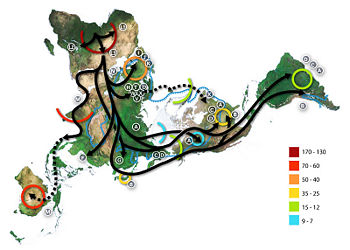
The original human lifestyle is hunting-gathering, which is adapted to the savanna. Other human lifestyles are nomadism (often linked to animal herding) and permanent settlements made possible by the development of agriculture. Humans have a great capacity for altering their habitats by various methods, such as agriculture, irrigation, urban planning, construction, transport, and manufacturing goods.
Permanent human settlements are dependent on proximity to water and, depending on the lifestyle, other natural resources such as fertile land for growing crops and grazing livestock, or seasonally by populations of prey. With the advent of large-scale trade and transport infrastructure, immediate proximity to these resources has become unnecessary, and in many places these factors are no longer the driving force behind growth and decline of population.
Human habitation within closed ecological systems in hostile environments (Antarctica, outer space) is expensive, typically limited in duration, and restricted to scientific, military, or industrial expeditions. Life in space has been very sporadic, with a maximum of thirteen humans in space at any given time, starting with Yuri Gagarin's space flight in 1961. Between 1969 and 1974, up to two humans at a time spent brief intervals on the Moon. As of 2005, no other celestial body has been visited by human beings, although there has been a continuous human presence in space since the launch of the initial crew to inhabit the International Space Station on October 31, 2000.
Population
From 1800 to 2000, the human population increased from one to six billion. It is expected to crest at around ten billion during the 21st century. As of 2004, around 2.5 billion out of 6.3 billion people live in urban centres, and this is expected to rise during the 21st century. Problems for humans living in cities include various forms of pollution, crime, and poverty, especially in inner city and suburban slums.
Geneticists Lynn Jorde and Henry Harpending of the University of Utah have concluded that the variation in the total stock of human DNA is minute compared to that of other species; and that around 74,000 years ago, human population was reduced to a small number of breeding pairs, possibly as small as 1000, resulting in a very small residual gene pool. Various reasons for this bottleneck have been postulated, the most popular, called the Toba catastrophe theory, being the eruption of a volcano at Lake Toba.
Human evolution
- Main articles: Human evolution, Human migration
The study of human evolution encompasses many scientific disciplines, but most notably physical anthropology and genetics. The term "human", in the context of human evolution, refers to the genus Homo, but studies of human evolution usually include other hominids and hominines, such as the australopithecines.
Biologically, humans are defined as hominids of the species Homo sapiens, of which the only extant subspecies is Homo sapiens sapiens. They are usually considered the only surviving species in the genus Homo, although some argue that the two species of chimpanzees should be reclassified from Pan troglodytes and Pan paniscus to Homo troglodytes and Homo paniscus respectively, given that they share a recent ancestor with man. [6]
Sahelanthropus tchadensis • Orrorin tugenensis • Ardipithecus
Australopithecus: A. anamensis • A. afarensis • A. bahrelghazali • A. africanus • A. garhi
Paranthropus: P. aethiopicus • P. boisei • P. robustus
Kenyanthropus platyops
Homo: H. habilis • H. rudolfensis • H. georgicus • H. ergaster • H. erectus (H. e. lantianensis • H. e. palaeojavanicus • H. e. pekinensis • H. e. soloensis) • H. cepranensis • H. antecessor • H. heidelbergensis • H. neanderthalensis • H. rhodesiensis • H. floresiensis • Homo sapiens (H. s. idaltu • H. s. sapiens)
Full genome sequencing resulted in these conclusions: "After 6 [million] years of separate evolution, the differences between chimp and human are just 10 times greater than those between two unrelated people and 10 times less than those between rats and mice." Chimp and human DNA is 96% identical
It has been estimated that the human lineage diverged from that of chimpanzees about five million years ago, and from gorillas about eight million years ago. However, in 2001 a hominine skull approximately seven million years old, classified as Sahelanthropus tchadensis, was discovered in Chad and seems to indicate an earlier divergence.
Two prominent scientific theories of the origins of contemporary humans exist. They concern the relationship between modern humans and other hominids:
The single-origin or "out of africa" hypothesis proposes that modern humans evolved in Africa and later replaced hominids in other parts of the world.
The multiregional hypothesis proposes that modern humans evolved at least in part from independent hominid populations.
Human evolution is characterised by a number of important physiological trends:
- expansion of the brain cavity and brain itself, which is typically 1,400 cm³ in volume, over twice that of a chimpanzee or gorilla. The pattern of human postnatal brain growth differs from that of other apes (heterochrony), allowing for an extended period of social learning in juvenile humans. Physical anthropologists argue that a reorganisation of the structure of the brain is more important than cranial expansion itself;
- canine tooth reduction;
- bipedal locomotion;
- descent of the larynx, which makes speech possible.
How these trends are related and what their role is in the evolution of complex social organisation and culture are matters of ongoing debate.
Intelligence
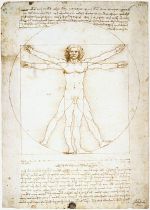
Most humans consider their species to be the most intelligent in the animal kingdom. Certainly, humans are the only technologically advanced animal. Along with the brain's internal complexity, the brain to body mass ratio is generally assumed to be a good indicator of relative intelligence. Humans have the second highest ratio, with the tree shrew having the highest [7], and the bottlenose dolphin very similar to humans.
The human ability to abstract may be unparalleled in the animal kingdom. Human beings are one of five species to pass the mirror test – which tests whether an animal recognises its reflection as an image of itself – along with chimpanzees or bonobos, orangutans, and dolphins. Human beings under the age of four usually fail the test.
Culture
- Main articles: Culture of human beings, Culture
Culture is defined here as a set of distinctive material, intellectual, emotional, and spiritual features of a social group, including art, literature, lifestyles, value systems, traditions, rituals, and beliefs.
Culture consists of at least three elements: values, social norms, and artefacts. A culture's values define what it holds to be important. Norms are expectations of how people ought to behave. Artefacts – things, or material culture – derive from the culture's values and norms together with its understanding of the way the world functions.
Origins
- Main articles: Origin belief, Creationism
Essentially every culture has its characteristic origin beliefs. Creationism or creation theology is the belief that humans, the Earth, the universe and the multiverse were created by a supreme being or deity. The event itself may be seen either as an act of creation (ex nihilo) or the emergence of order from preexisting chaos (demiurge). Many who hold "creation" beliefs consider such belief to be a part of religious faith, and hence compatible with, or otherwise unaffected by scientific views while others maintain the scientific data is compatible with creationism. Proponents of evolutionary creationism may claim that understood scientific mechanisms are simply aspects of supreme creation. Otherwise, science-oriented believers may consider the scriptural account of creation as simply a metaphor.
Language
- Main articles: Language, Philosophy of language
Values, norms and technology are dependent on the capacity for humans to share ideas. The faculty of speech may be a defining feature of humanity, probably predating phylogenetic separation of the modern population. (See Proto-World language, Origins of language.) Language is central to the communication between humans. Some scientists argue that non-human animals are able to use language too, and that non-human primates are able to learn human sign language [8] [9] (pdf). Language is central to the sense of identity that unites cultures and ethnicities.
The invention of writing systems some 5000 years ago, allowing the preservation of speech, was a major step in cultural evolution. Language, especially written language, is sometimes thought to have supernatural status or powers. (See Magic, Mantra, Vac.)
The science of linguistics describes the structure of language and the relationship between languages. There are estimated to be some 6,000 different languages, including sign languages, used today.
Music
Music is a natural intuitive phenomenon operating in the three worlds of time, pitch, energy, and under the three distinct and interrelated organization structures of rhythm, harmony, and melody.
Composing, improvising and performing music are all art forms. Listening to music is perhaps the most common form of entertainment, while learning and understanding it are popular disciplines. There are a wide variety of Music genres and ethnic musics.
Emotion and sexuality
Human emotion has a significant influence on, or can even be said to control, human behaviour. Emotional experiences perceived as pleasant, like love, admiration, or joy, contrast with those perceived as unpleasant, like hate, envy, or sorrow. There is often a distinction seen between refined emotions, which are socially learned, and survival oriented emotions, which are thought to be innate.
Human exploration of emotions as separate from other neurological phenomena is worth note, particularly in those cultures were emotion is considered separate from physiological state. In some cultural medical theories, to provide an example, emotion is considered so synonymous with certain forms of physical health that no difference is thought to exist. The Stoics believed excessive emotion was harmful, while some Sufi teachers (in particular, the poet and astronomer Omar Khayyám) felt certain extreme emotions could yield a conceptual perfection, what is often translated as ecstasy.
In modern scientific thought, certain refined emotions are considered to be a complex neural trait of many domesticated and a few non-domesticated mammals, developed commonly in reaction to superior survival mechanisms and intelligent interaction with each other and the environment; as such, refined emotion is not in all cases as discrete and separate from natural neural function as was once assumed. Still, when humans function in civilised tandem, it has been noted that uninhibited acting on extreme emotion can lead to social disorder and crime.
Human sexuality, besides ensuring reproduction, has important social functions, creating physical intimacy, bonds and hierarchies among individuals, and that may be directed to spiritual transcendence, and/or to the enjoyment of any activity involving sexual gratification. Sexual desire is experienced as a bodily urge, often accompanied by strong emotions, both positive (such as love or ecstasy) and negative (such as jealousy). (See also Libido.)
As with other human self-descriptions, humans propose it is high intelligence and complex societies of humans that have produced the most complex sexual behaviors of any animal. Human sexual choices are usually made in reference to cultural norms, which vary widely. Restrictions against sexual relations outside a marriage bond and same-sex relations are amongst the most common.
Body image
The physical appearance of the human body is central to culture and art. In every human culture, people adorn their bodies with tattoos, cosmetics, clothing, and jewellery. Hairstyles and hair colour also have important cultural implications. The perception of an individual as physically beautiful or ugly can have profound implications for their lives. This is particularly true of women, whose external appearance is highly valued in most, if not all, human societies. Anthropologists believe this to be an important factor in the development of personality and social relations in particular physical attractiveness.
There is a relatively low sexual dimorphism between human males and females in comparison with other mammals.
Trade and economics

Trade is the voluntary exchange of goods, services, or both, and a form of economics. A mechanism that allows trade is called a market. The original form of trade was barter, the direct exchange of goods and services. Modern traders instead generally negotiate through a medium of exchange, such as money. As a result, buying can be separated from selling, or earning. The invention of money (and later credit, paper money and non-physical money) greatly simplified and promoted trade.
Trade exists for many reasons. Due to specialization and division of labor, most people concentrate on a small aspect of manufacturing or service, trading their labour for products. Trade exists between regions because different regions have an absolute or comparative advantage in the production of some tradable commodity, or because different regions' size allows for the benefits of mass production. As such, trade between locations benefits both locations.
Economics is a social science that studies the production, distribution, trade and consumption of goods and services.
Economics, which focuses on measurable variables, is broadly divided into two main branches: microeconomics, which deals with individual agents, such as households and businesses, and macroeconomics, which considers the economy as a whole, in which case it considers aggregate supply and demand for money, capital and commodities. Aspects receiving particular attention in economics are resource allocation, production, distribution, trade, and competition. Economic logic is increasingly applied to any problem that involves choice under scarcity or determining economic value. Mainstream economics focuses on how prices reflect supply and demand, and uses equations to predict consequences of decisions.
Artefacts, technology, and science
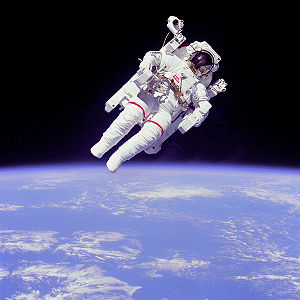
- See main articles: Archaeology, Technology, Science, Civilisation
Human cultures are both characterised and differentiated by the objects that they make and use. Archaeology attempts to tell the story of past or lost cultures in part by close examination of the artefacts they produced. Early humans left stone tools, pottery and jewellery that are particular to various regions and times.
Improvements in technology are passed from one culture to another. For instance, the cultivation of crops arose in several different locations, but quickly spread to be an almost ubiquitous feature of human life. Similarly, advances in weapons, architecture and metallurgy are quickly disseminated.
Such techniques can be passed on by oral tradition. The development of writing, itself a type of artefact, made it possible to pass information from generation to generation and from region to region with greater accuracy.
Together, these developments made possible the commencement of civilisation and urbanisation, with their inherently complex social arrangements. Eventually this led to the institutionalisation of the development of new technology, and the associated understanding of the way the world functions. This Science now forms a central part of human culture.
In recent times, physics and astrophysics have come to play a central role in shaping what is now known as physical cosmology, that is, the understanding of the universe through scientific observation and experiment. This discipline, which focuses on the universe as it exists on the largest scales and at the earliest times, begins by arguing for the big bang, a sort of cosmic explosion from which the universe itself is said to have erupted ~13.7 ± 0.2 billion (109) years ago. After its violent beginnings and until its very end, scientists then propose that the entire history of the universe has been an orderly progression governed by physical laws.
Mind
- Main articles: Mind, Consciousness
Consciousness is a state of mind, said to possess qualities such as, self-awareness, sentience, sapience, and the ability to perceive the relationship between oneself and one's environment.
The way in which the world is experienced is the subject of much debate and research in philosophy of mind, psychology, brain biology, neurology, and cognitive science.
Humans (and often others as well) are variously said to possess consciousness, self-awareness, and a mind, the fruition of being our senses and perceptions. Each of us has a subjective view of existence, the passage of time, and free will.
There are many debates about the extent to which the mind constructs or experiences the outer world, and regarding the definitions and validity of many of the terms used above.
Cognitive scientist Daniel Dennett, for example, argues that there is no such thing as a narrative centre called mind, but that instead there is simply a collection of sensory inputs and outputs: different kinds of software running in parallel (Dennett, 1991).
Psychology and human ethology
- Main articles: Psychology, Ethology
Psychology (Classical Greek: psyche = "soul" or "mind", logos = "study of") is the study of behaviour, mind and thought and the neurological basis for them.
Psychoanalysis, the examination of the subconscious was, devised by Sigmund Freud and expanded and refined by the Swiss psychiatrist Carl Gustav Jung (initially one of Freud's followers and friend) and others.
Freud divided the mind into the id (an individual's basic needs and instincts), the superego (personal and cultural values and norms), and the ego (the central, organising self, whose job it is to satisfy the id but not upset the superego). [10] (See also Ego, Superego and Id.)
C. G. Jung founded the school of analytical psychology and introduced the notion of the collective unconscious, a term taken from philosophy and used by Jung to describe symbols or archetypes that he believed might be common to all cultures.
There are also the Conscious, Subconscious, and Superconsciousness, a related but not identical set of categories.
The behaviour and mental processes of animals (human and non-human) can be described through animal cognition, ethology, and comparative psychology as well.
Human ecology is an academic discipline that investigates how humans and human societies interact with their environment, nature and the human social environment.
Philosophy
- Main articles: Philosophy, Philosophy of mind
Philosophy is a discipline or field of study involving the investigation, analysis, and development of ideas at a general, abstract, or fundamental level. It is the discipline searching for a general understanding of values and reality by chiefly speculative rather than observational means comprising as its core logic, ontology or metaphysics, epistemology, and axiology which includes the branches of ethics and aesthetics. The term covers a very wide range of approaches, and is also used to refer to a worldview, to a perspective on an issue, or to the positions argued for by a particular philosopher or school of philosophy.
Metaphysics is a branch of philosophy concerned with the study of "first principles" and "being" (ontology). Problems that were not originally considered metaphysical have been added to metaphysics. Other problems that were considered metaphysical problems for centuries are now typically relegated to their own separate subheadings in philosophy, such as philosophy of religion, philosophy of mind, philosophy of perception, philosophy of language, and philosophy of science. In rare cases subjects of metaphysical research have been found to be entirely physical and natural.
The mind is the term most commonly used to describe the higher functions of the human brain, particularly those of which humans are subjectively conscious, such as personality, thought, reason, memory, intelligence and emotion. Other species of animals share some of these mental capacities, and it is also used in relation to supernatural beings, as in the expression "the mind of God." The term is used here only in relation to humans.
There are many Philosophies of mind, the most common relating to the nature of being, and ones way of being, or purpose.
Adi Shankara in the East proposed Advaita Vedanta, a popular argument for monism (the metaphysical view that all is of one essential essence, substance or energy).
Another type of monism is physicalism or materialism, which holds that only the physical is real, and that the mental can be reduced to the physical. Idealism and phenomenalism, on the contrary, assert the existence of the mind and deny, or at the least deny the importance of, an external reality that exists independently of the mind.
René Descartes proposed that both mind and matter exist, and that the one cannot be reduced to the other. This represents the philosophy of mind form of dualism. Dvaita is the Hindu philosophy that incorporates a form of dualism that distinguishes God from souls.
Johannes Jacobus Poortman proposed a Pluralist classification of a number of different mystical and metaphysical views. Vishishtadvaita is the Hindu philosophy incorporating pluralism.
Plato, Aristotle, Socrates, Kant, and John Locke are also Human philosophers of note.
Many religions and spiritual traditions hold that humans have both a body and a soul, usually proposing that the soul can in some way survive the death of the body. Although the soul sometimes is equated with the mind, this is not always the case.
As a finer distinction between religion and philosophy, esoteric cosmology is distinguished from religion in its more sophisticated construction and reliance on intellectual understanding rather than faith, and from philosophy in its emphasis on techniques of psycho-spiritual transformation.
In between the doctrines of religion and science, stands the philosophical perspective of metaphysical cosmology. This ancient field of study seeks to draw logical conclusions about the nature of the universe, humanity, god and/or their connections based on the extension of some set of presumed facts borrowed from religion and/or observation.
What might be called the core metaphysical problems would be the ones which have always been considered metaphysical. What most of such problems have in common is that they are the problems of ontology, the science of being or existence as well as the basic categories thereof—trying to find out what entities and what types of entities exist. Ontology has strong implications for the conceptions of reality.
Motivation
Template:Main3 Motivation is the driving force of desire behind all actions of any organism.
Motivation is based on emotion, specifically, on the search for satisfaction (positive emotional experiences), and the avoidance of conflict; positive and negative are defined by the individual brain state, not by social norms: a person may be driven to self-injury or violence because their brain is conditioned to create a positive response to these actions. Motivation is important because it is involved in the performance of all learned responses.
Within psychology, conflict avoidance and the libido are seen to be primary motivators. Within economics motivation is often seen to be based on Financial incentives, Moral incentives, or Coercive incentives. Religions generally posit Godly or demonic influences.
For many love is the central motivation in life. The classical Greeks had four words for love:
- Eros : Romantic love
- Philia : Friendship, Love (but especially platonic love).
- Agape : Divine, unconditioned love. Many religious persons will refer to the love that they feel towards, or receive from God as divine love or Agape.
- Storge : Natural familial affection.
Happiness or being happy is a condition which humans can have. The definition of happiness is one of the greatest philosophical topics, at least since the time of Socrates, and is especially central to Ethics, being the starting point of Aristotle's ethical works. Some people might define it as the best condition which a human can have - a condition of mental and physical health. Others may define it as freedom from want and distress; consciousness of the good order of things; assurance of one's place in the universe or society, inner peace, and so forth. Aristotle concieved of Eudaimonia, a society governed by pursuit of happiness.
- The happy life is thought to be one of excellence; now an excellent life requires exertion and does not consist of amusement. If Eudaimonia, or happiness, is an activity in accordance with excellence, it's reasonable that it should be in accordance with the highest excellence, and will be that of the best thing in us."
- Aristotle, "Nicomachean Ethics"
Self-reflection and humanism
- Main articles: Human self-reflection, Humanism
Thales of Miletus, when asked what was difficult, answered in a well-known apophthegm: "To Know Thyself" γνῶθι σεαυτόν (also attributed to Socrates, and inscribed on the Temple of Apollo at Delphi).
Humans often consider themselves to be the dominant species on Earth, and the most advanced in intelligence and ability to manage their environment. This belief is especially strong in modern Western culture, and is derived in part from the Hebrew Bible's creation story in which Adam is explicitly given dominion over the Earth and all of its creatures. Alongside such claims of dominance we often find radical pessimism because of the frailty and brevity of human life. In the Hebrew Bible, for example, dominion of man is promised in Genesis 1:28, but the author of Ecclesiastes bewails the vanity of all human effort.
The Ancient Greek philosopher Protagoras made the famous claim that "Man is the measure of all things; of what is, that it is; of what is not, that it is not." Aristotle describes man as the "communal animal" (ζῷον πολιτικόν), i.e. emphasising society-building as a central trait of human nature, and "animal with sapience" (ζῷον λόγον ἔχων, animal rationale), a term that also inspired the species' taxonomy, Homo sapiens. This philosophy is today called "Humanism".
Humanism as a philosophy defines a socio-political doctrine the bounds of which are not constrained by those of locally developed cultures, but which seeks to include all of humanity and all issues common to human beings. Because spiritual beliefs of a community often manifests as religious doctrine, the history of which is as factious as it is unitive, secular humanism grew as an answer to the need for a common philosophy that transcended the cultural boundaries of local moral codes and religions. Many humanists are religious, however, and see humanism as simply a mature expression of a common truth present in most religions. Humanists affirm the possibility of an objective truth and accept that human perception of that truth is imperfect. The most basic tenets of humanism are that humans matter and can solve human problems, and that science, freedom of speech, rational thought, democracy, and freedom in the arts are worthy pursuits or goals for all peoples. Modern humanism depends on reason and logic and rejects the supernatural.
From a scientific viewpoint, Homo sapiens certainly is among the most generalised species on Earth, and few single species occupy as many diverse environments as humans. Various attempts have been made to identify a single behavioural characteristic that distinguishes humans from all other animals, e.g. the ability to make and use tools, the ability to alter the environment, language use, and the development of complex social structures. Some anthropologists think that these readily observable characteristics (tool-making and language) are based on less easily observable mental processes that might be unique among humans: the ability to think symbolically, in the abstract or logically. Others, that our capacity for symbolic thought is a development from our capacity to manipulate tools and/or the development of speech. It is difficult however to arrive at a set of attributes that includes all humans, and humans only. The wish to find unique human characteristics could be more a matter of Anthropocentrism than of zoology in the end.
Spirit
Template:Main3
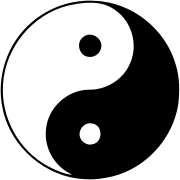
Humans apply different approaches to attempt to answer fundamental questions about topics like the nature of the universe (cosmology), its creation (cosmogony) and destruction (eschatology), and our place in it – who we are, why we are here, what happens after life, and more. Broadly speaking, these questions can be addressed and beliefs formed from a number of approaches and perspectives, such as religion, science, philosophy (particularly ontology within metaphysics), esotericism, and mysticism. However, these approaches are not mutually exclusive. For example, an expert scientist can be highly religious, have a philosophy of life, and follow any number of esoteric or mystical practices.
Four major approaches to forming beliefs about the nature of the universe (cosmology) include religious cosmology, scientific or physical cosmology, metaphysical cosmology and esoteric cosmology.
The earliest form of cosmology appears in the origin beliefs of many religions as they seek to explain the existence and nature of the world. In many cases, views about the creation (cosmogony) and destruction (eschatology) of the universe play a central role in shaping a framework of religious cosmology for understanding a person's role in the universe and its relationship to one or more divine beings.
Religion—sometimes used interchangeably with “faith” or “belief system”—is commonly defined as belief concerning the supernatural, sacred, or divine, and the moral codes, practices, values, institutions and rituals associated with such belief. In the course of the development of religion, it has taken a huge number of forms in various cultures and individuals.
Occasionally, the word "religion" is used to designate what should be more properly described as "organized religion" or "religious organization" – that is, an organization of people that supports the exercise of some religion, often taking the form of a legal entity.
There are a number of perspectives regarding the fundamental nature and substance of humans. These are by no means mutually exclusive, and the list is by no means exhaustive.
- Materialism holds that humans are physical beings without any supernatural or spiritual component. Materialism holds to naturalism and rejects supernaturalism.
- Monotheism generally believes that a single deity, who is either the only one in existence, or who incorporates or excels all lesser deities, created humanity. Humans are thus bound by filial and moral duty, and cared for by paternal providence. In all the Abrahamic religions (Judaism, Christianity, and Islam), humans are lord or steward over the earth and all its other creatures.
- Pantheism holds that human beings, as part of the world, are a part of God, who is identified with the world (and vice versa). (Panentheism is similar, but holds that the world is God, but that God is more than the world.) Monism, animism, Vedic religion, and other forms of Eastern philosophy have related beliefs.
- Monism is the metaphysical view that all is of one essential essence, substance or energy. Monistic theism, a variant of both monism and Monotheism, views God as both immanent and transcendent. Both are dominant themes in Hinduism and Surat Shabd Yoga, that hold humans are special in that they can conceptualise God and strive to achieve him, but their soul is akin to a divine spark just as an animal's is.
- Taoism may be rendered as religion, morality, duty, knowledge, rationality, ultimate truth, path, or taste. Its semantics vary widely depending on the context. Tao is generally translated into English as "The Way".
- In polytheistic religions, humans are mainly characterised by their inferiority to the gods, sometimes reflected in a hierarchical society ruled by dynasties that claim divine descent.
- Animism is the belief that objects and ideas including other animal species, tools, and natural phenomena have or are expressions of living spirits. Rituals in animistic cultures are often performed by shamans or priests, who are usually seen as possessing spiritual powers greater than or external to the normal human experience.
- Esotericism refers to “hidden” knowledge available only to the advanced, privileged, or initiated, as opposed to exoteric knowledge, which is public. It is used especially for spiritual practices.
- Mysticism ("to conceal") is the pursuit of achieving communion with, or conscious awareness of ultimate reality, the divine, spiritual truth, or God through direct, personal experience (intuition or insight); the belief in the existence of realities beyond perceptual or intellectual apprehension that are central to being and directly accessible through personal experience; or the belief that such experience is an important source of knowledge.
See also
- Anthropology
- Baby, Toddler, Child, Man, and Woman
- Culture
- Civilization
- Emotion
- Environmentalism
- Graphical timeline of human evolution
- Homo (genus), Humanoid
- Human behaviour
- Human biology, Human ecology, Human evolution, Human variability
- Human condition, Human nature, Human rights, Humanitarian
- Humanism, Transhumanism
- Humanities
- Mannaz (etymology)
- Metahuman
- Misanthropy (dislike of the human race)
- Parahumans
- Personal life
- Space and survival
- World population, World hunger
- Humanitas
- Vitruvian man (proportions of the human body)
ReferencesISBN links support NWE through referral fees
- Taxonomy of living primates, Minnesota State University Mankato, retrieved April 4, 2005
- Life expectancy in the U.S., 2001, National Center for Health Statistics, Centers for Disease Control and Prevention, December 8, 2004, retrieved April 2, 2005
- U.N. Statistics on Population Ageing, United Nations press release, February 28, 2002, retrieved April 2, 2005
- The World Factbook, U.S. Central Intelligence Agency, retrieved April 2, 2005
- Freud's Structural and Topographical Models of Personalit, All-Psych online, retrieved April 2, 2005
- Conscious Awareness & The Unconscious Min by Rhawn Joseph, Brainmind.com, retrieved April 3, 2005
- Chimpanzee Communication: Insight into the Origin of Languag by Amy Stafford, Minnesota State University Mankato, retrieved April 4, 2005
- Genetic migrations, by Kevin Duerinck, retrieved April 5, 2005
- Apes and Language: A Literature Review (pdf) by Karen Shaw, Montana State University-Billings, retrieved April 19, 2005
- Divergence between samples of chimpanzee and human DNA sequences is 5%, counting indels by R.J. Britten, California Institute of Technology, October 4, 2002
- Boyd, Robert, and Joan B. Silk. 2003. How Humans Evolved. New York: Norton & Company. ISBN 0393978540.
- Descartes, René. Discourse on Method and Meditations on First Philosophy. (Meditations first published 1641), Hackett Publishing Company, 1999, ISBN 0872204200
- Dennett, Daniel. Consciousness Explained. Little Brown & Co, 1991, ISBN 0316180653
- Harding, Rosalind M., Eugene Healy, Amanda J. Ray, Nichola S. Ellis, Niamh Flanagan, Carol Todd, Craig Dixon, Antti Sajantila, Ian J. Jackson, Mark A. Birch-Machin, and Jonathan L. Rees. 2000. Evidence for variable selective pressures at MC1R. American Journal of Human Genetics 66: 1351-1361.
- Pascal, Blaise. 1669. Pensées. Penguin Books, 1995; ISBN 0140446451
- Rogers, Alan R., David Iltis, and Stephen Wooding. 2004. Genetic variation at the MC1R locus and the time since loss of human body hair, Current Anthropology 45 (1): 105-108.
- Saint Augustine. Augustine: Earlier Writings, Westminster John Knox Press, 1979, ISBN 066424162X
- Templeton, Alan. "Out of Africa again and again" Nature 416 (2002): 45 - 51.
- Vinayak Eswaran, Henry Harpending and Alan R. Rogers, Genomics refutes an exclusively African origin of humans, Journal of Human Evolution, In Press, Corrected Proof, Available online 6 May 2005. [11]
Further reading
- A Look at Modern Human Origins by C. David Kreger.
- Homo Sapiens Tree of Life web project
- Why Humans and Their Fur Parted Way by Nicholas Wade, New York Times, August 19, 2003.
- 3-D Brain Anatomy, The Secret Life of the Brain, Public Broadcasting Service, retrieved April 3, 2005
- Human evolution: the fossil evidence in 3D by Philip L. Walker and Edward H. Hagen, Dept of Anthropology, University of California, Santa Barbara, retrieved April 5, 2005
- Dobzhansky, Theodosius. 1963. Anthropology and the natural sciences-The problem of human evolution, Current Anthropology 4 (2): 138-148.
- Jablonski, N.G. & Chaplin, G. 2000. The evolution of human skin coloration 'Journal of Human Evolution 39: 57-106. [12] (pdf)
- Robin, Ashley. 1991. Biological Perspectives on Human Pigmentation' Cambridge: Cambridge University Press.
- Sagan, Carl. 1978. The Dragons of Eden, A Balantine Book, ISBN 0345346297
ast:Homo sapiens bn:মানুষ ca:Homo sapiens sapiens cs:Člověk da:Menneske de:Mensch dz:Omo dapeonz el:Άνθρωπος es:Humano eo:Homo fr:Homo sapiens ga:Duine gl:Ser Humano ko:사람 hr:Čovjek id:Manusia iu:ᐃᓄᒃ it:Homo sapiens sapiens he:אדם kw:Tus la:Homo sapiens li:Mins ln:Moto ms:Manusia nah:Tlaca nl:Mens nds:Minsch ja:人間 nb:Menneske pl:Człowiek pt:Homo sapiens ro:Om ru:Человек scn:Umanu simple:Human sl:Človek sr:Човек fi:Ihminen sv:Människan th:มนุษย์ tl:Tao uk:Людина zh:人 zh-min-nan:Lâng
Credits
New World Encyclopedia writers and editors rewrote and completed the Wikipedia article in accordance with New World Encyclopedia standards. This article abides by terms of the Creative Commons CC-by-sa 3.0 License (CC-by-sa), which may be used and disseminated with proper attribution. Credit is due under the terms of this license that can reference both the New World Encyclopedia contributors and the selfless volunteer contributors of the Wikimedia Foundation. To cite this article click here for a list of acceptable citing formats.The history of earlier contributions by wikipedians is accessible to researchers here:
The history of this article since it was imported to New World Encyclopedia:
Note: Some restrictions may apply to use of individual images which are separately licensed.
